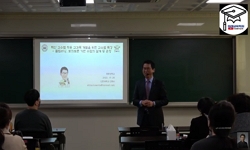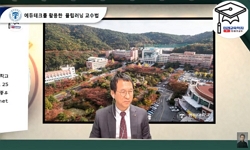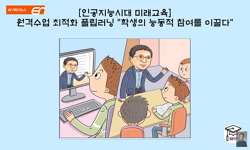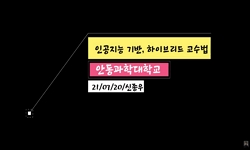본 연구의 목적은 교사에게 국내의 플립러닝 연구를 통합하여 플립러닝 설계 및 실행시 고려해야할 요소에 대한 가이드라인을 제시하는 것에 있다. 이를 위해 국내에서 수행된 플립러닝 연...
http://chineseinput.net/에서 pinyin(병음)방식으로 중국어를 변환할 수 있습니다.
변환된 중국어를 복사하여 사용하시면 됩니다.
- 中文 을 입력하시려면 zhongwen을 입력하시고 space를누르시면됩니다.
- 北京 을 입력하시려면 beijing을 입력하시고 space를 누르시면 됩니다.
https://www.riss.kr/link?id=A106262025
- 저자
- 발행기관
- 학술지명
- 권호사항
-
발행연도
2018
-
작성언어
Korean
-
주제어
Flipped learning ; Moderator variable ; Meta-analysis ; Effect size ; 플립러닝 ; 조절변인 ; 메타분석 ; 효과크기
-
등재정보
KCI등재
-
자료형태
학술저널
-
수록면
1-21(21쪽)
-
KCI 피인용횟수
8
- DOI식별코드
- 제공처
- 소장기관
-
0
상세조회 -
0
다운로드
부가정보
국문 초록 (Abstract)
본 연구의 목적은 교사에게 국내의 플립러닝 연구를 통합하여 플립러닝 설계 및 실행시 고려해야할 요소에 대한 가이드라인을 제시하는 것에 있다. 이를 위해 국내에서 수행된 플립러닝 연구 95편을 선정하였고, CMA를 활용하여 메타분석을 실시하였다. 플립러닝 설계변인에 따른 효과크기를 산출한 결과는 다음과 같다. 첫째, 실험처치기간은 10주일 때 효과크기가 큰 것으로 나타났다. 둘째, 토론시간은 25분-30분일 때 효과크기가 유의하게 큰 것으로 나타났다. 셋째, 플립러닝 적용시 숙제가 부여될 때 효과크기가 통계적으로 유의하게 큰 것으로 나타났다. 넷째, 사전 동영상은 교사가 직접 동영상을 제작하는 것보다 기존의 동영상을 활용하는 것이 효과적이었으며, 수업시 사전학습여부를 확인하는 것이 효과적인 것으로 나타났다. 그러나, 동영상시간, 사전학습을 하지 않았을 경우 대안 제시유무, 자기 주도적 학습활동 제공유무, 학습자 수준에 따른 활동 제공유무, 심화, 보충학습 제공유무, 오리엔테이션 제공유무에 따른 효과크기는 통계적으로 유의하지 않았다. 본 연구는 이러한 연구결과를 바탕으로 플립러닝 설계 및 실행할 때 고려해야할 시사점을 제안하였다.
다국어 초록 (Multilingual Abstract)
The purpose of this study is to provide teachers with a guide to factors to consider when designing and implementing flipped learning. To do this we selected 95 related studies conducted in Korea and analyzed the data using CMA. This study focused mor...
The purpose of this study is to provide teachers with a guide to factors to consider when designing and implementing flipped learning. To do this we selected 95 related studies conducted in Korea and analyzed the data using CMA. This study focused more on the moderator variables of the existing meta-analysis and calculated the effect size of flipped learning according to the moderator variables related to the flipped learning design characteristics. The results of the study are as follows. First, the effect size of the experimental period was ten weeks. Second, when the discussion time was 25 to 30 minutes the effect size was significantly larger. Third, when homework is applied to flipped learning the effect size is statistically significant. Fourth, it is effective to use a current video rather than have the teacher produce the video in advance. Fifth, it is effective to confirm whether or not there was any prior learning. In addition, there were statistically significant effects of video time, the presence of alternatives when there was no prior learning, the presence of self-directed learning activities, the presence of activities directly related to the learner’s level, and the presence of enrichment-supplementary learning. Based on these results the implications and suggestions are summarized. This study will be helpful to teachers who are utilizing flipped learning for the first time.
참고문헌 (Reference)
1 이지연, "학습자 중심 플립드러닝(Flipped Learning) 수업의 적용 사례" 한국교육공학회 30 (30): 163-191, 2014
2 박에스더, "플립러닝에 대한 메타 연구: 성공적 적용요건과 향후 연구방향" 한국데이터정보과학회 27 (27): 169-178, 2016
3 이희숙, "플립러닝 학습이 학습동기 및 학업성취도에 미치는 효과에 관한 연구" 한국컴퓨터교육학회 18 (18): 47-57, 2015
4 김민정, "플립러닝 사전 예습학습 및 본 학습의 명시적 인지활동 수준 분리가 수업흥미와 학업성취에 미치는 영향" 학습자중심교과교육학회 16 (16): 1279-1300, 2016
5 서미옥, "플립드 러닝의 효과성에 대한 메타분석" 한국교육공학회 32 (32): 707-741, 2016
6 손성호, "초등교육에서 플립러닝 성공전략 탐색: 교사 및 학습자의 학습과정을 중심으로" 학습자중심교과교육학회 16 (16): 1287-1310, 2016
7 강명희, "예비교사의 플립러닝에 대한 관심도 분석: 관심중심수용모형(CBAM)을 중심으로" 과학교육연구소 55 (55): 427-440, 2016
8 이승진, "다층모형을 활용한 교사들의 교내 수업개선 노력에 영향을 미치는 변인 분석" 교육연구원 33 (33): 105-130, 2017
9 장은주, "국어 수업에서 ‘거꾸로 교실’(Flipped Learning) 적용 방안 연구" 교육연구원 31 (31): 199-217, 2015
10 권회림, "국내 블렌디드 러닝의 효과에 관한 메타분석" 한국교육정보미디어학회 21 (21): 333-359, 2015
1 이지연, "학습자 중심 플립드러닝(Flipped Learning) 수업의 적용 사례" 한국교육공학회 30 (30): 163-191, 2014
2 박에스더, "플립러닝에 대한 메타 연구: 성공적 적용요건과 향후 연구방향" 한국데이터정보과학회 27 (27): 169-178, 2016
3 이희숙, "플립러닝 학습이 학습동기 및 학업성취도에 미치는 효과에 관한 연구" 한국컴퓨터교육학회 18 (18): 47-57, 2015
4 김민정, "플립러닝 사전 예습학습 및 본 학습의 명시적 인지활동 수준 분리가 수업흥미와 학업성취에 미치는 영향" 학습자중심교과교육학회 16 (16): 1279-1300, 2016
5 서미옥, "플립드 러닝의 효과성에 대한 메타분석" 한국교육공학회 32 (32): 707-741, 2016
6 손성호, "초등교육에서 플립러닝 성공전략 탐색: 교사 및 학습자의 학습과정을 중심으로" 학습자중심교과교육학회 16 (16): 1287-1310, 2016
7 강명희, "예비교사의 플립러닝에 대한 관심도 분석: 관심중심수용모형(CBAM)을 중심으로" 과학교육연구소 55 (55): 427-440, 2016
8 이승진, "다층모형을 활용한 교사들의 교내 수업개선 노력에 영향을 미치는 변인 분석" 교육연구원 33 (33): 105-130, 2017
9 장은주, "국어 수업에서 ‘거꾸로 교실’(Flipped Learning) 적용 방안 연구" 교육연구원 31 (31): 199-217, 2015
10 권회림, "국내 블렌디드 러닝의 효과에 관한 메타분석" 한국교육정보미디어학회 21 (21): 333-359, 2015
11 김보경, "교직수업을 위한 역진행 수업모형 개발" 교육종합연구소 12 (12): 25-56, 2014
12 송주연, "교직 과목 수업에서의 플립러닝 적용 사례 연구" 학습자중심교과교육학회 16 (16): 851-877, 2016
13 이경화, "교과별 차별화된 플립드 러닝 수업이 대학생의 학업성취 향상 및 수업만족도에 미치는 효과" 영재교육연구소 7 (7): 1-22, 2017
14 이민경, "거꾸로 교실(Flipped classroom)의 교실사회학적 의미 분석: 참여 교사들의 경험을 중심으로" 한국교육사회학회 24 (24): 181-207, 2014
15 University of Texas at Austin Center for Teaching and Learning, "What is the flipped classroom?"
16 Hwang, S. D., "Understanding of understandable meta-analysis" Hakjisa 2015
17 Lee, M. K., "Understand and practice flipped learning" Education Science History 2016
18 Oh, S. S., "Theory and practice of meta-analysis" Konkuk University Press 2007
19 Rahman, A. A., "The influences of flipped classroom: a meta analysis" 2014
20 Bishop, J. L., "The flipped classroom: a survey of the research" American Society for Engineering Education 1-26, 2013
21 Rosenthal, R., "The file drawer problem and tolerance for null results" 86 : 638-641, 1979
22 Ham, S. O., "The effects of inverse teaching techniques on english language learning in high school students" Korea National University of Education 2017
23 Cho, Y. J., "The effects of flipped learning techniques on critique writing skills and attitudes" Korea National University of Education 2016
24 강남희, "The Comparison between Regular and Flipped Classrooms for EFL Korean Adult Learners" 한국멀티미디어언어교육학회 18 (18): 41-72, 2015
25 Becker, B. J., "Synthesizing standardized mean change measures" 41 : 257-278, 1988
26 Hedges, L. V., "Statistical methods for meta-analysis" Academic Press 1985
27 Cohen, J., "Research synthesis and meta-analysis: A step by step approach" Sage 1988
28 Hwang, S. D., "Meta analysis using R" Hakjisa 2016
29 Borenstein, M., "Introduction to meta-analysis" Wiley 2009
30 Davies, R. S., "Flipping the classroom and instructional technology integration in a college level information systems spreadsheet course" 61 (61): 563-580, 2013
31 Frydenberg, M., "Flipping excel" 11 (11): 63-73, 2013
32 Zainuddin, Z., "Flipped classroom research and trends from different fields of study" 17 (17): 2016
33 Sams, A., "Flip your students' learning" 70 (70): 16-20, 2013
34 Bergmann, J., "Flip your classroom: reach every student in every class every day" International Society for Technology in Education 2012
35 Stone, B. B., "Flip your classroom to increase active learning and student engagement" 2012
36 Choi, S. H., "Flip run backwards revolution in english classroom" hungsil Life 2016
37 Goodwin, B., "Evidence on flipped classrooms is still coming in" 70 (70): 78-80, 2013
38 Choi, E. S., "Effects of flipped jigsaw learning on english grammar and learning attitude amongst high school students" Hankuk University of foreign studies 2017
39 Higgins, J., "Cochrane handbook for systematic review of interventions version 5.1.0"
40 Egger, M., "Bias in meta-analysis detected by simple, graphical test" 315 : 629-634, 1997
41 Lee, H. S., "Analysis of the structural relationship among factors related to the effects of flipped learning" Kongju University 2015
42 Duval, S. J., "A non-parametric 'trim and fill' method of accounting for publication bias in meta-analysis" 95 : 89-98, 2000
동일학술지(권/호) 다른 논문
-
교사의 다문화가정 학생 지도 인식 영향요인 분석: 교사효능감 이론 틀의 적용
- 한국교원대학교 교육연구원
- 전하람
- 2018
- KCI등재
-
- 한국교원대학교 교육연구원
- 장봉석
- 2018
- KCI등재
-
교육대학원과 사범대학에서 교직 적성・인성 검사의 일반화가능도 분석
- 한국교원대학교 교육연구원
- 김성연
- 2018
- KCI등재
-
유치원 교사의 교직 전문성 인식이 교수몰입과 교직헌신에 미치는 영향
- 한국교원대학교 교육연구원
- 신연정
- 2018
- KCI등재
분석정보
인용정보 인용지수 설명보기
학술지 이력
| 연월일 | 이력구분 | 이력상세 | 등재구분 |
|---|---|---|---|
| 2026 | 평가예정 | 재인증평가 신청대상 (재인증) | |
| 2020-01-01 | 평가 | 등재학술지 유지 (재인증) |  |
| 2017-01-01 | 평가 | 등재학술지 유지 (계속평가) |  |
| 2013-01-01 | 평가 | 등재학술지 유지 (등재유지) |  |
| 2010-06-03 | 학술지명변경 | 외국어명 : 미등록 -> Korean Journal of Teacher Education |  |
| 2010-01-01 | 평가 | 등재학술지 선정 (등재후보2차) |  |
| 2009-01-01 | 평가 | 등재후보 1차 PASS (등재후보1차) |  |
| 2007-01-01 | 평가 | 등재후보학술지 선정 (신규평가) |  |
학술지 인용정보
| 기준연도 | WOS-KCI 통합IF(2년) | KCIF(2년) | KCIF(3년) |
|---|---|---|---|
| 2016 | 1.21 | 1.21 | 1.23 |
| KCIF(4년) | KCIF(5년) | 중심성지수(3년) | 즉시성지수 |
| 1.09 | 1.03 | 1.544 | 0.52 |




 스콜라
스콜라







